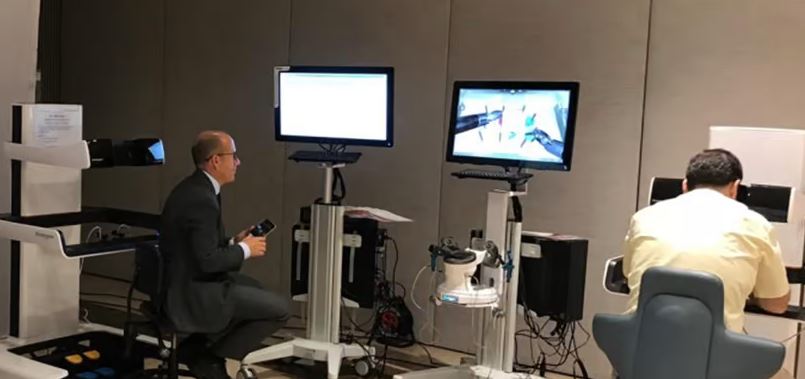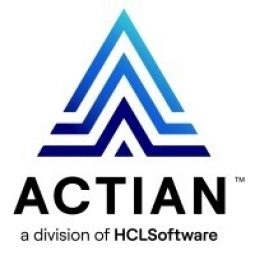Company Size
1,000+
Country
- Australia
Product
- Actian Ingres database
- Red Hat Enterprise Linux
- Microsoft CRM
- Microsoft SharePoint
Tech Stack
- .NET
- Ingres .NET Connector
Implementation Scale
- Enterprise-wide Deployment
Impact Metrics
- Cost Savings
- Customer Satisfaction
- Productivity Improvements
Technology Category
- Application Infrastructure & Middleware - API Integration & Management
- Infrastructure as a Service (IaaS) - Cloud Computing
Applicable Industries
- Education
Applicable Functions
- Business Operation
- Human Resources
Use Cases
- Process Control & Optimization
- Remote Collaboration
Services
- Software Design & Engineering Services
- System Integration
About The Customer
The Department of Education and Training in Western Australia (WA DET) is a government department responsible for managing a range of administrative activities to support programs that are delivered by 11 colleges and 8,000 staff throughout the state. The systems collectively manage in excess of 1 million student records with 120,000 students processed through the state’s training systems annually. The department was facing challenges with its back-end computing environment, which was spread across regional locations, each managing their own back-end environments. This imposed an expensive support burden on WA DET staff and vendor support engineers.
The Challenge
The Department of Education and Training in Western Australia (WA DET) was facing a challenge with its back-end computing environment. The department managed a range of administrative activities to support programs delivered by 11 colleges and 8,000 staff throughout the state. The systems collectively managed over 1 million student records with 120,000 students processed through the state’s training systems annually. However, regional locations had to manage their own back-end environments, which imposed an expensive support burden on WA DET staff and vendor support engineers. Proprietary Unix server environments, often built on a variety of hardware models of differing ages, had to be managed remotely, along with the complex applications they were running. With many DET colleges hundreds of kilometers apart, it had become too expensive and cumbersome to maintain this computing environment.
The Solution
The department began an initiative to centralize and consolidate its back-end computing environment around a central data center using the Linux and Ingres platforms. WA DET’s developers and technical staff selected Ingres Database to migrate away from the existing proprietary environment. This was built on commodity servers running Red Hat Enterprise Linux and Ingres. Minimal change on the front end ensured continuity of service throughout the project, which was an essential requirement in such a high-use environment. No immediate changes were required to .NET-developed applications as data was channeled through the Ingres .NET Connector. These applications processed enrollment, resource management, timetabling, student fees, assessments, results, Web course catalogues and more. WA DET’s technical staff were supported by Ingres database specialists throughout the course of the migration, ensuring a smooth transition to the open source platform.
Operational Impact
Quantitative Benefit

Case Study missing?
Start adding your own!
Register with your work email and create a new case study profile for your business.
Related Case Studies.

Case Study
IoT platform Enables Safety Solutions for U.S. School Districts
Designed to alert drivers when schoolchildren are present, especially in low-visibility conditions, school-zone flasher signals are typically updated manually at each school. The switching is based on the school calendar and manually changed when an unexpected early dismissal occurs, as in the case of a weather-event altering the normal schedule. The process to reprogram the flashers requires a significant effort by school district personnel to implement due to the large number of warning flashers installed across an entire school district.

Case Study
Revolutionizing Medical Training in India: GSL Smart Lab and the LAP Mentor
The GSL SMART Lab, a collective effort of the GSL College of Medicine and the GSL College of Nursing and Health Science, was facing a challenge in providing superior training to healthcare professionals. As clinical medicine was becoming more focused on patient safety and quality of care, the need for medical simulation to bridge the educational gap between the classroom and the clinical environment was becoming increasingly apparent. Dr. Sandeep Ganni, the director of the GSL SMART Lab, envisioned a world-class surgical and medical training center where physicians and healthcare professionals could learn skills through simulation training. He was looking for different simulators for different specialties to provide both basic and advanced simulation training. For laparoscopic surgery, he was interested in a high fidelity simulator that could provide basic surgical and suturing skills training for international accreditation as well as specific hands-on training in complex laparoscopic procedures for practicing physicians in India.

Case Study
Implementing Robotic Surgery Training Simulator for Enhanced Surgical Proficiency
Fundacio Puigvert, a leading European medical center specializing in Urology, Nephrology, and Andrology, faced a significant challenge in training its surgical residents. The institution recognized the need for a more standardized and comprehensive training curriculum, particularly in the area of robotic surgery. The challenge was underscored by two independent studies showing that less than 5% of residents in Italian and German residency programs could perform major or complex procedures by the end of their residency. The institution sought to establish a virtual reality simulation lab that would include endourological, laparoscopic, and robotic platforms. However, they needed a simulator that could replicate both the hardware and software of the robotic Da Vinci console used in the operating room, without being connected to the actual physical console. They also required a system that could provide both basic and advanced simulation training, and a metrics system to assess the proficiency of the trainees before they performed surgical procedures in the operating theater.

Case Study
Edinburgh Napier University streamlines long-distance learning with Cisco WebEX
• Geographically dispersed campus made in-person meetings costly and inconvenient.• Distance-learning programs in Malaysia, India, and China required dependable, user-friendly online tools to maximize interaction in collaborative workspaces.• Virtual learning environment required a separate sign-in process, resulting in a significant administrative burden for IT staff and limited adoption of collaboration technology.

Case Study
8x increased productivity with VKS
Before VKS, a teacher would spend a lot of time showing a group of 22 students how to build a set of stairs within a semester of 120 hours. Along with not leaving the teacher much time to provide one-on-one support for each student to properly learn carpentry, it also left a considerable amount of room for error. Key information would be misinterpreted or lost as the class was taught in the typical show-and-tell way.

Case Study
Scalable IoT Empowering GreenFlex's Sustainable Growth
GreenFlex, a company that supports sustainable development, decarbonization, and energy efficiency, faced several challenges in its quest to expand its business. The company needed to deploy a robust and sustainable IoT technology to support its growth. It was crucial for them to monitor and control devices at customer sites in a safe and reliable manner. They also needed to integrate devices across a range of communication protocols and gather and act on data to meet efficiency targets. GreenFlex had previously built IoT capabilities into its digital platform, GreenFlexIQ, to monitor and manage customer sites remotely. However, they soon realized that they needed a new platform to support their ambitions. They needed a platform that could scale to connect more devices for production management and make it easier for the operations team to manage devices in the field.



